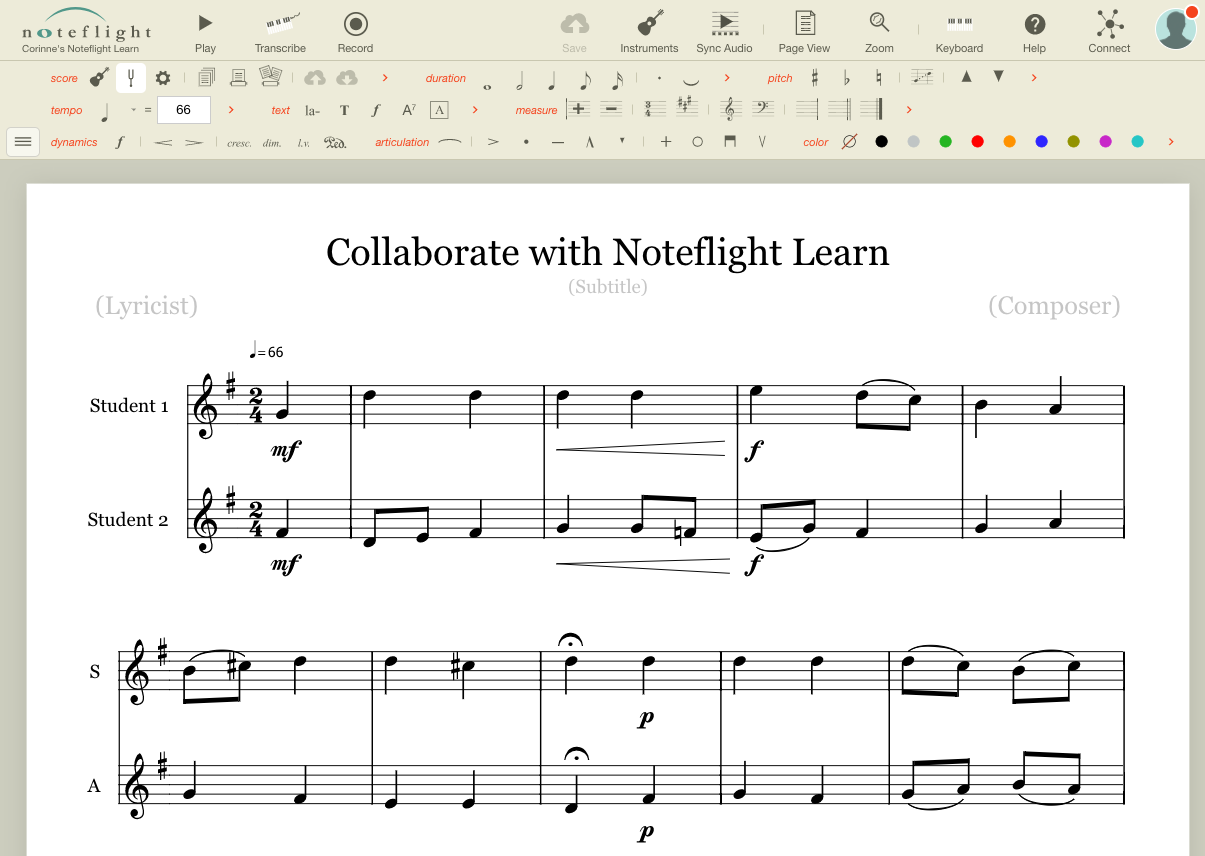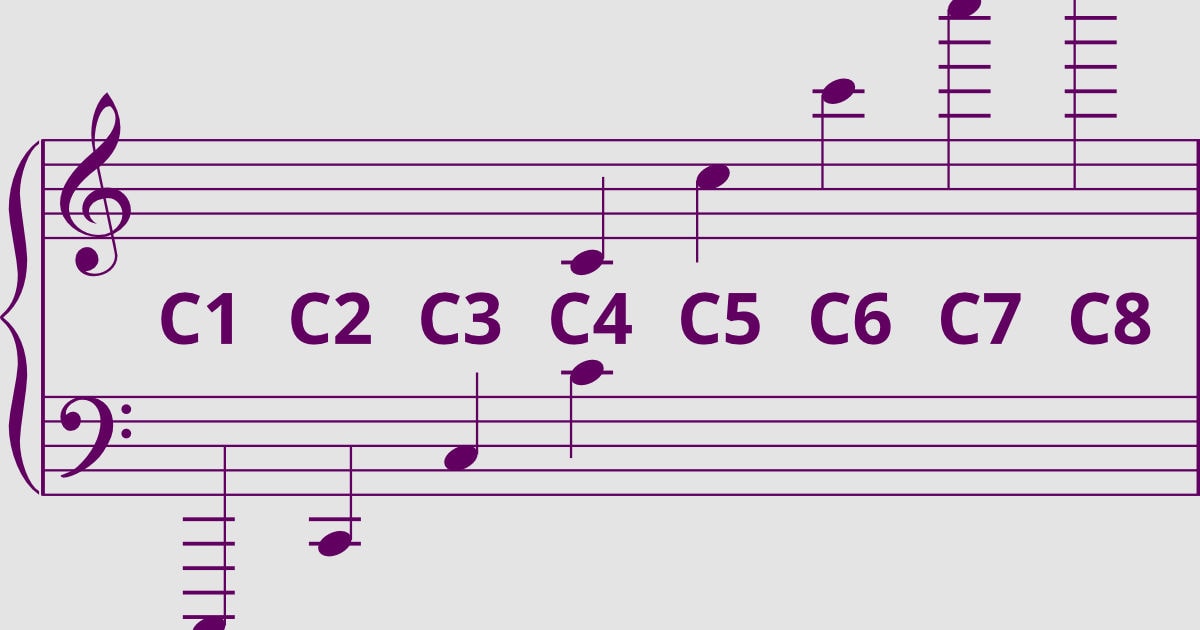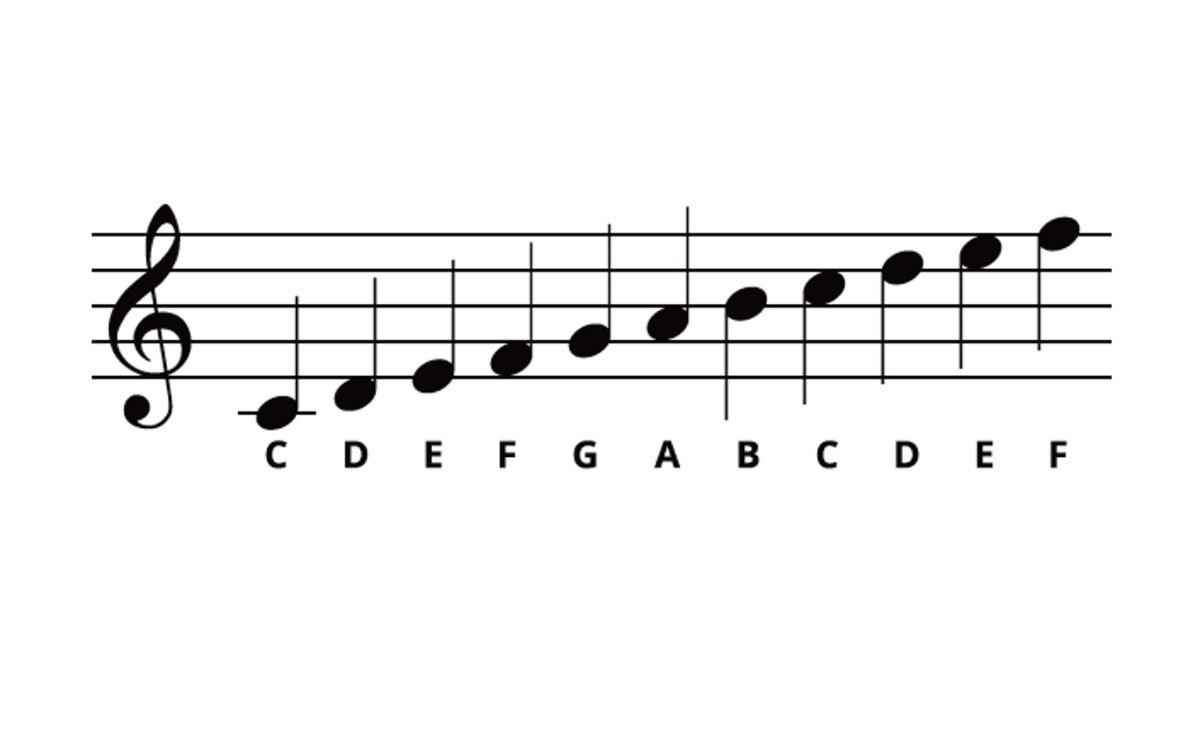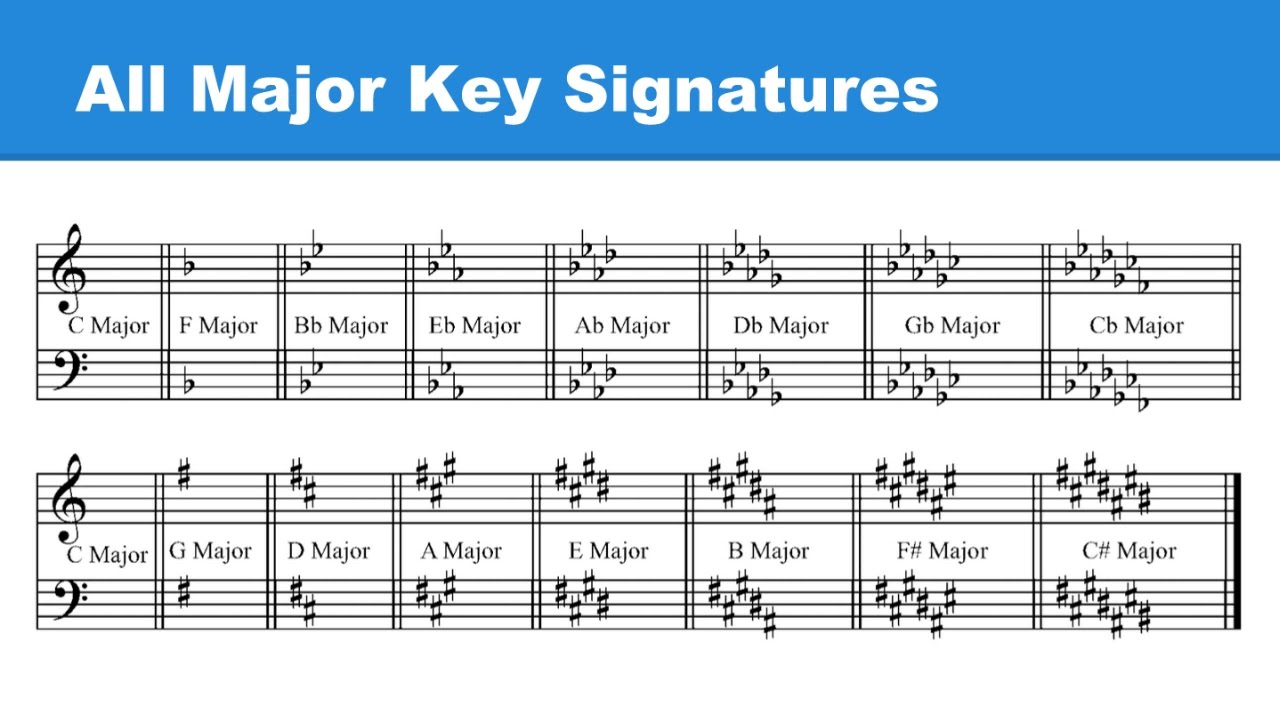Home>Production & Technology>Treble>How To Go From Treble Clef To Alto Clef
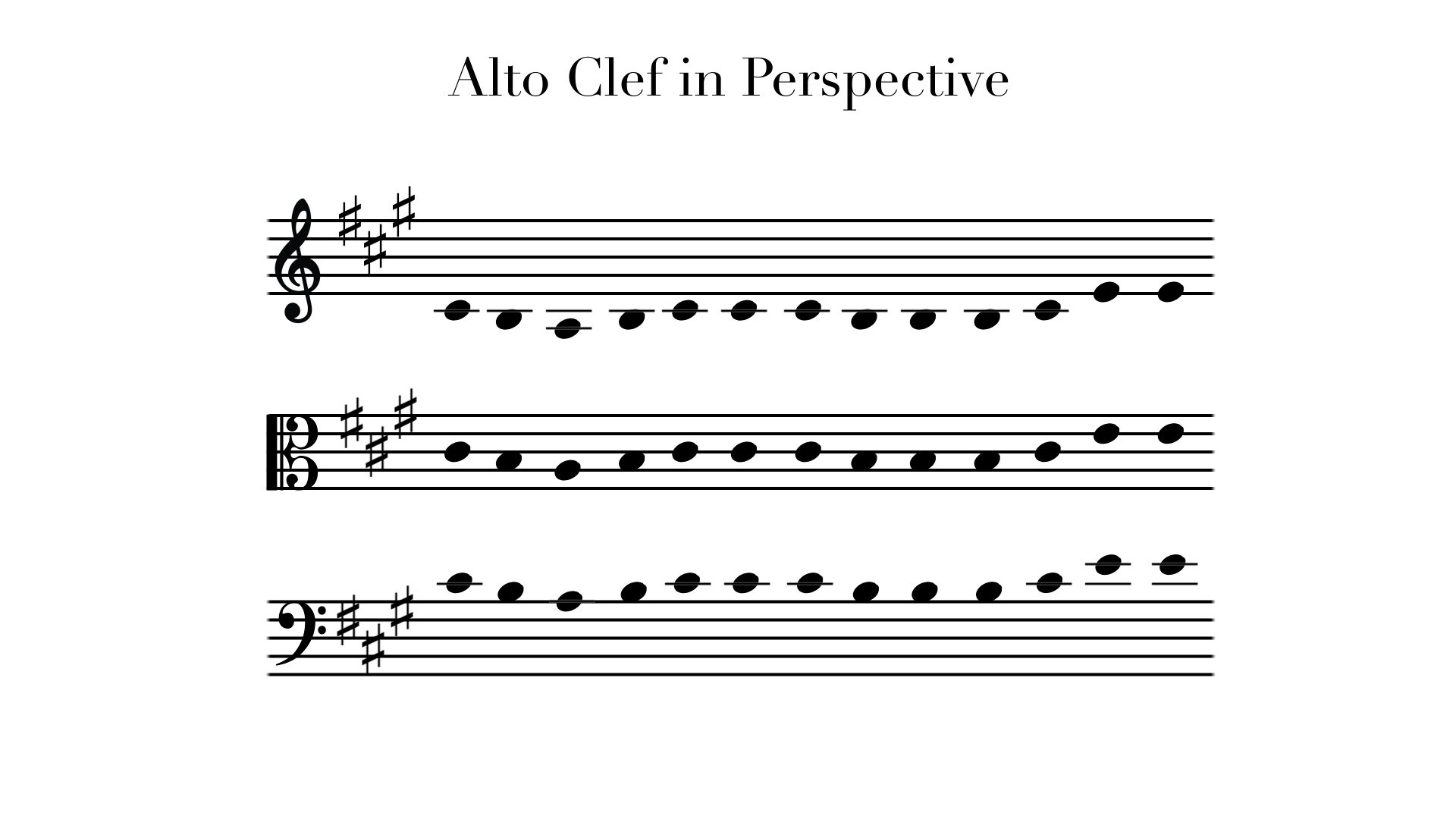

Treble
How To Go From Treble Clef To Alto Clef
Modified: January 22, 2024
Learn how to transition from treble clef to alto clef in this comprehensive guide. Master the key techniques and notation tips to expand your musical repertoire.
(Many of the links in this article redirect to a specific reviewed product. Your purchase of these products through affiliate links helps to generate commission for AudioLover.com, at no extra cost. Learn more)
Table of Contents
Introduction
Are you a musician who wants to expand your horizons and learn a new clef? If you’re already familiar with the treble clef and want to delve into the world of the alto clef, you’ve come to the right place. In this article, we’ll explore how you can go from reading music in treble clef to mastering the alto clef.
The treble clef is often the first clef that musicians are introduced to when they start learning an instrument. It’s commonly used for instruments like the violin, flute, and trumpet. However, as you progress in your musical journey, you may encounter sheet music that requires you to read in the alto clef.
The alto clef is primarily used by instruments such as the viola and the alto trombone. It sits between the treble clef and the bass clef on the staff and poses a unique challenge for musicians. Transitioning from the treble clef to the alto clef requires developing new reading skills and understanding the note placements.
Don’t be intimidated by the thought of learning a new clef. With the right techniques and practice, you can confidently navigate the complexities of the alto clef and expand your musical repertoire. So let’s dive in and explore the world of the alto clef!
Understanding the Treble Clef
The treble clef, also known as the G clef, is one of the most widely recognized clefs in music notation. It is commonly used for instruments with higher ranges, such as the violin, flute, and trumpet. Understanding the treble clef is essential for any musician who wants to expand their repertoire.
When you look at sheet music written in the treble clef, you’ll notice that the symbol resembles a stylized fancy letter “G” with a curly tail. This tail wraps around the second line of the staff, indicating that this line represents the note G above middle C.
The treble clef is made up of five lines and four spaces, with each line and space representing a different note. The lines, from bottom to top, are E, G, B, D, and F. Remembering the phrase “Every Good Boy Deserves Fudge” can help you memorize the notes of the lines.
Similarly, the spaces, from bottom to top, spell out the word FACE. These mnemonic devices make it easier to quickly identify the notes on the staff.
In addition to the lines and spaces, the treble clef includes ledger lines above and below the staff. These lines extend the staff when notes go beyond the five lines and four spaces. It’s important to note that each ledger line represents a step up or down from the neighboring line or space.
Now that you have a basic understanding of the treble clef, you can start to explore more complex pieces of music written in this clef. As you become more comfortable reading and interpreting treble clef notation, you’ll gain confidence and be ready to embark on the journey of learning the alto clef.
Understanding the Alto Clef
The alto clef, also known as the C clef, is used primarily by instruments with a mid-range pitch, such as the viola, the alto trombone, and sometimes the cello. It is placed on the third line of the staff, indicating that this line represents the note C.
Unlike the treble clef, which is often one of the first clefs musicians learn, the alto clef can be more challenging to grasp. However, with practice and patience, you can develop a solid understanding of this clef and confidently read music written in it.
The notes on the alto clef staff follow a pattern similar to other clefs. The lines, from bottom to top, represent F, A, C, E, and G, while the spaces spell out the word “FACE.” These mnemonic devices can help you quickly identify the notes on the staff.
One important aspect of the alto clef is that it allows for a more balanced distribution of notes between the lines and spaces. This makes it particularly well-suited for instruments like the viola, which have a pitch range that lies between the treble and bass clef.
Similar to the treble clef, the alto clef also utilizes ledger lines when notes extend beyond the staff. Each ledger line represents a step up or down from the neighboring line or space, just like in the treble clef.
Understanding the alto clef is crucial if you plan on playing instruments like the viola or alto trombone. By familiarizing yourself with the note placements and practicing reading sheet music in this clef, you’ll expand your musical versatility and be prepared for a wider range of musical opportunities.
Transitioning from Treble to Alto Clef
Transitioning from the treble clef to the alto clef requires some adjustments in your reading habits and understanding of note placement. While it may feel challenging at first, with consistent practice and focus, you can successfully make the transition and broaden your musical skills.
One of the first steps in transitioning to the alto clef is familiarizing yourself with the new note placements. Take the time to study and memorize the notes on the lines and spaces of the alto clef staff. This will help you develop a solid foundation for reading music in this clef.
Understanding how the notes on the alto clef staff relate to the notes on the treble clef staff is crucial. It can be helpful to physically draw the two clefs side by side to compare the note positions. This visual representation will aid in recognizing and associating the notes in both clefs.
Another technique for transitioning to the alto clef is to practice sight-reading exercises specifically designed for this clef. Start with simple melodies and gradually progress to more complex pieces. This will allow you to gradually become more comfortable with reading and interpreting music written in the alto clef.
One common challenge when transitioning to the alto clef is the change in clef orientation. In the treble clef, notes below the middle line move from left to right, while notes above the middle line move from right to left. In the alto clef, the orientation is reversed – notes below the middle line move from right to left, and notes above the middle line move from left to right. Practicing scales and exercises that focus on crossing the middle line will help train your brain to adjust to this change.
Remember, patience and persistence are key when transitioning to the alto clef. It may take time to feel fully comfortable reading in this new clef, but with consistent practice and dedication, you’ll gradually build confidence and proficiency.
By embracing the challenge of transitioning from the treble clef to the alto clef, you’ll expand your musical abilities and open up new possibilities for playing a wider variety of instruments and repertoire.
Tips and Techniques for Reading Alto Clef
Reading music in the alto clef may seem daunting at first, but with the right tips and techniques, you can improve your proficiency and become more comfortable with this clef. Here are some helpful strategies to enhance your ability to read alto clef notation:
- Memorize the note positions: Take time to memorize the notes on the lines and spaces of the alto clef staff. Creating mnemonic devices or mental associations can aid in quickly identifying the notes.
- Practice scales and arpeggios: Focusing on scales and arpeggios in the alto clef will help you familiarize yourself with the note patterns and improve your overall fluency in reading this clef.
- Work on sight-reading exercises: Practice sight-reading specifically for the alto clef. Start with simple melodies and gradually progress to more complex pieces. This will train your eyes and brain to recognize patterns and notes faster.
- Utilize transposition techniques: If you are comfortable reading music in another clef, such as the treble or bass clef, try transposing music written in those clefs into the alto clef. This exercise will help you make connections between the different clefs.
- Learn from experts: Consult with experienced viola or alto trombone players who are proficient in reading the alto clef. They can offer valuable insights and tips based on their own experiences.
- Practice reading both hands separately: If you are a pianist transitioning to the alto clef, practice reading each hand separately. This will allow you to focus on one clef at a time and build confidence before attempting to play hands together.
- Take it one step at a time: Don’t overwhelm yourself with complex pieces of music right away. Start with simpler exercises and gradually progress to more challenging repertoire as you become more comfortable with reading alto clef notation.
- Use technology to your advantage: There are various apps and online resources available that provide exercises and drills specifically designed for reading the alto clef. Use these tools to supplement your practice and reinforce your learning.
Remember, reading music in the alto clef is a skill that requires patience and consistent practice. By implementing these tips and techniques into your practice routine, you’ll steadily improve your ability to read and interpret alto clef notation.
Practice Exercises for Transitioning to Alto Clef
Transitioning from the treble clef to the alto clef requires dedicated practice and exposure to alto clef notation. Along with studying the theory and understanding note placements, engaging in specific exercises can help reinforce your skills and increase your comfort level with the alto clef. Here are some practice exercises to aid in your transition:
- Note identification: Begin by practicing note identification on the alto clef staff. Start with simple exercises that focus on individual lines or spaces, gradually increasing the complexity as you become more proficient.
- Sight-reading melodies: Choose short melodies written in the alto clef and sight-read them. This exercise will develop your ability to quickly recognize and play the notes in real-time. Start with slower tempos and gradually increase the speed as your skills progress.
- Scale practice: Practice scales in the alto clef, similar to how you would in the treble clef. Begin with the C major scale and gradually work your way through different keys. This will help reinforce the note positions and improve your familiarity with the alto clef fingerings.
- Sight-transposition: Take music written in the treble clef and transpose it into the alto clef. This exercise allows you to practice reading familiar melodies in a different clef, helping you make connections between the two notation systems.
- Interval recognition: Practice identifying intervals within the alto clef. Start with simple intervals like seconds and thirds, then progress to larger intervals. This exercise will help you develop a sense of distance between notes in the alto clef.
- Playing duets: Play duets with another musician who reads music in the alto clef. This interaction will not only improve your sight-reading skills but also provide an opportunity to observe and learn from a more experienced alto clef reader.
- Transcribing melodies: Listen to music written for the viola or alto trombone and transcribe the melodies into the alto clef notation. This exercise hones your ability to hear and notate music in the alto clef, further enhancing your reading skills.
- Working with an accompanist: Collaborate with a pianist or another instrumentalist to play pieces written for the alto clef. This practice will help you navigate the challenges of playing in the alto clef while working with other musicians.
Remember to approach these exercises with patience and perseverance. Consistent practice and exposure to alto clef notation will gradually strengthen your ability to read and interpret music in this clef.
Conclusion
Congratulations on taking the initiative to expand your musical skills by transitioning from the treble clef to the alto clef. While it may seem challenging at first, with dedication and practice, you can confidently navigate the complexities of the alto clef and broaden your musical horizons.
Understanding the treble clef and the alto clef is essential for any musician who wants to explore a wider range of instruments and musical repertoire. By familiarizing yourself with the note placements, practicing sight-reading exercises, and working on specific techniques, you can successfully make the transition.
Remember, the key to mastering the alto clef is consistent practice. Incorporate practice exercises like note identification, scale practice, sight-reading, and transposing music to reinforce your skills and increase your comfort level with the alto clef notation.
Don’t be discouraged by the initial difficulties you may face. Transitioning to the alto clef is a gradual process that requires time and patience. Embrace the challenge, seek guidance from experienced musicians, and celebrate every small milestone along the way.
As you become more proficient in reading music in the alto clef, you’ll open up new opportunities to play instruments such as the viola or the alto trombone. Your musical repertoire will expand, and you’ll be able to collaborate with a wider range of musicians. The skills you develop during this transition will not only enhance your overall musicianship but also deepen your understanding and appreciation of music.
Remember, every musician’s journey is unique, so be kind to yourself and enjoy the process. Keep practicing, be persistent, and soon you’ll be confidently reading music in the alto clef like a pro.


